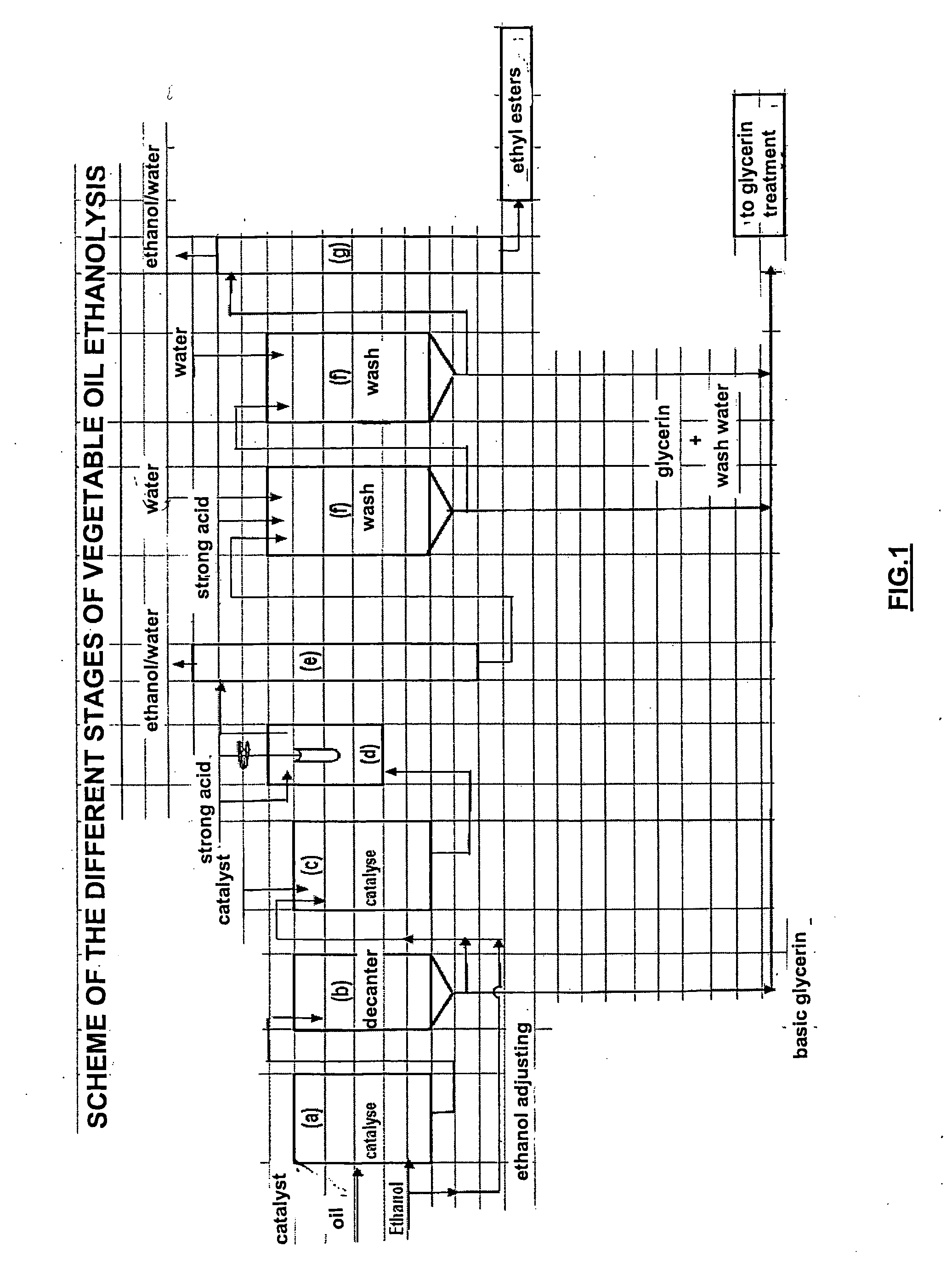Method for manufacturing ethyl esters from fatty substances of natural origin
a technology of ethyl esters and fatty substances, which is applied in the direction of fatty oil/acid recovery from waste, fatty oil/fat refining, fatty acid chemical modification, etc., can solve the problems of inability to obtain a natural separation of glycerol, inability to achieve a single reaction stage high conversion rate, and few ethanolysis methods described
- Summary
- Abstract
- Description
- Claims
- Application Information
AI Technical Summary
Benefits of technology
Problems solved by technology
Method used
Image
Examples
example 3 (
According to the Invention)
[0073] 1000 g refined colza oil of alimentary quality and 266 g ethanol containing 3000 ppm water, respecting an alcohol / oil stoichiometry of 1.7, is fed into a stirred glass reactor equipped with a bottom valve and heated to 70° C. 10 g of a 30% methanolic sodium methylate solution is then added. Stirring and the 70° C.±2° C. temperature are maintained for 60 minutes (stage (a)).
[0074] In stage (b), the reaction medium is decanted at 60° C. 15 to 20 minutes after stirring is stopped, 95 g of a glycerin solution consisting of glycerin, ethanol, ethyl esters, sodium soaps and sodium alcoholates (mixture of methylate, ethylate and glycerate) is drawn off.
[0075] After this first transesterification reaction, the composition of the mixture is as follows (in % by mass): [0076] ethyl and methyl esters: 91.5 [0077] triglycerides: 0.9 [0078] diglycerides: 2.6 [0079] monoglycerides: 3.7 [0080] sterols and sterol esters: 1.3.
[0081] A second transesterification st...
PUM
| Property | Measurement | Unit |
|---|---|---|
| temperature | aaaaa | aaaaa |
| temperature | aaaaa | aaaaa |
| temperature | aaaaa | aaaaa |
Abstract
Description
Claims
Application Information
 Login to View More
Login to View More - R&D
- Intellectual Property
- Life Sciences
- Materials
- Tech Scout
- Unparalleled Data Quality
- Higher Quality Content
- 60% Fewer Hallucinations
Browse by: Latest US Patents, China's latest patents, Technical Efficacy Thesaurus, Application Domain, Technology Topic, Popular Technical Reports.
© 2025 PatSnap. All rights reserved.Legal|Privacy policy|Modern Slavery Act Transparency Statement|Sitemap|About US| Contact US: help@patsnap.com


